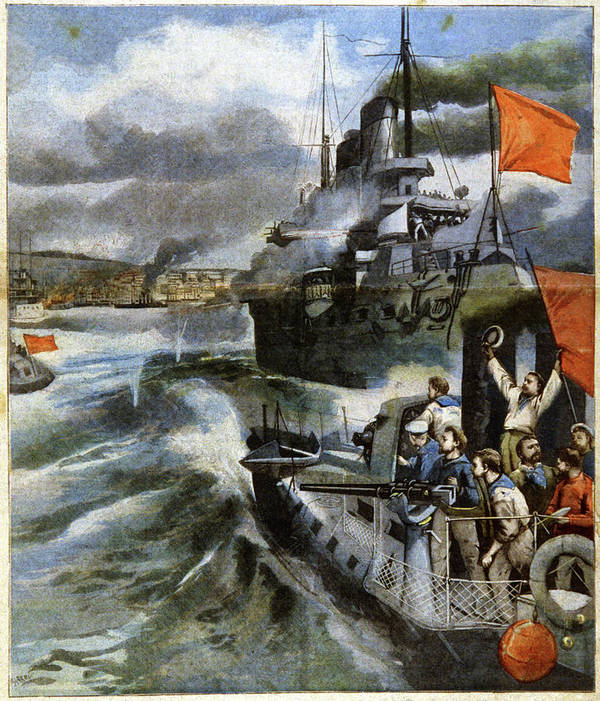More languages
More actions
 | This article is a stub. You can help improve this article by editing it. |

The Russian revolution of 1905, or the First Russian Revolution, was a bourgeois-democratic revolution which that took place between January 1905 and June 1907 in the Russian Empire. It was during this revolution that the first Soviets were established by workers to organize their revolution.[1]
Start of revolution[edit | edit source]
Strikes[edit | edit source]
In December 1904, a large strike of oilfield workers led by the Bolsheviks began in Baku. This was followed by strikes in Petrograd in January 1905.[1]
Bloody Sunday[edit | edit source]
On 22 January 1905, 140,000 workers gathered and marched to the Winter Palace to bring a petition to Tsar Nicholas II. The tsar's troops fired upon them, killing over a thousand unarmed workers. By the end of January, about 440,000 workers were on strike.[1]
Potemkin revolt[edit | edit source]
In June 1905, soldiers on the battleship Potemkin revolted following a strike in Odessa. The tsar dispatched other battleships to deal with the revolt, but they refused to fire on the Potemkin.[1]
Dumas[edit | edit source]
First Duma[edit | edit source]
On 30 October 1905, the tsar issued the October Manifesto and promised to create a representative Duma. The election law vastly overrepresented landlords and capitalists and did not let women vote. The Bolsheviks boycotted the Duma, and the tsar dispersed it in the summer of 1906.[1]
Second Duma[edit | edit source]
The Bolsheviks decided to participate in the Second (Bulygin) Duma in order to advance the revolutionary movement.[1] On 3 June 1907, the tsar dissolved the Duma.[2]
Third Duma[edit | edit source]
The Third Duma further reduced representation of workers and peasants while increasing it for landlords and capitalists. Of 442 deputies in the Duma, 171 were Black Hundreds, 113 were Octobrists and their allies, 101 were Kadets, 13 were Trudoviki, and 18 were Socialists.[2]
Tactics of Bolsheviks and Mensheviks[edit | edit source]
Bolsheviks[edit | edit source]
The Bolsheviks supported the peasantry against the landlords and boycotted the Bulygin Duma, the representative legislature created by the tsar.[1]
Mensheviks[edit | edit source]
The Mensheviks supported the liberal bourgeoisie and not the peasants in the 1905 revolution. They also participated in the Bulygin Duma.[1]
References[edit | edit source]
- ↑ 1.0 1.1 1.2 1.3 1.4 1.5 1.6 1.7 Joseph Stalin (1939). History of the Communist Party of the Soviet Union (Bolsheviks): 'The Mensheviks and the Bolsheviks in the Period of the Russo-Japanese War and the First Russian Revolution'. [MIA]
- ↑ 2.0 2.1 Joseph Stalin (1939). History of the Communist Party of the Soviet Union (Bolsheviks): 'The Mensheviks and the Bolsheviks in the Period of the Stolypin Reaction. The Bolsheviks Constitute Themselves an Independent Marxist Party'. [MIA]
